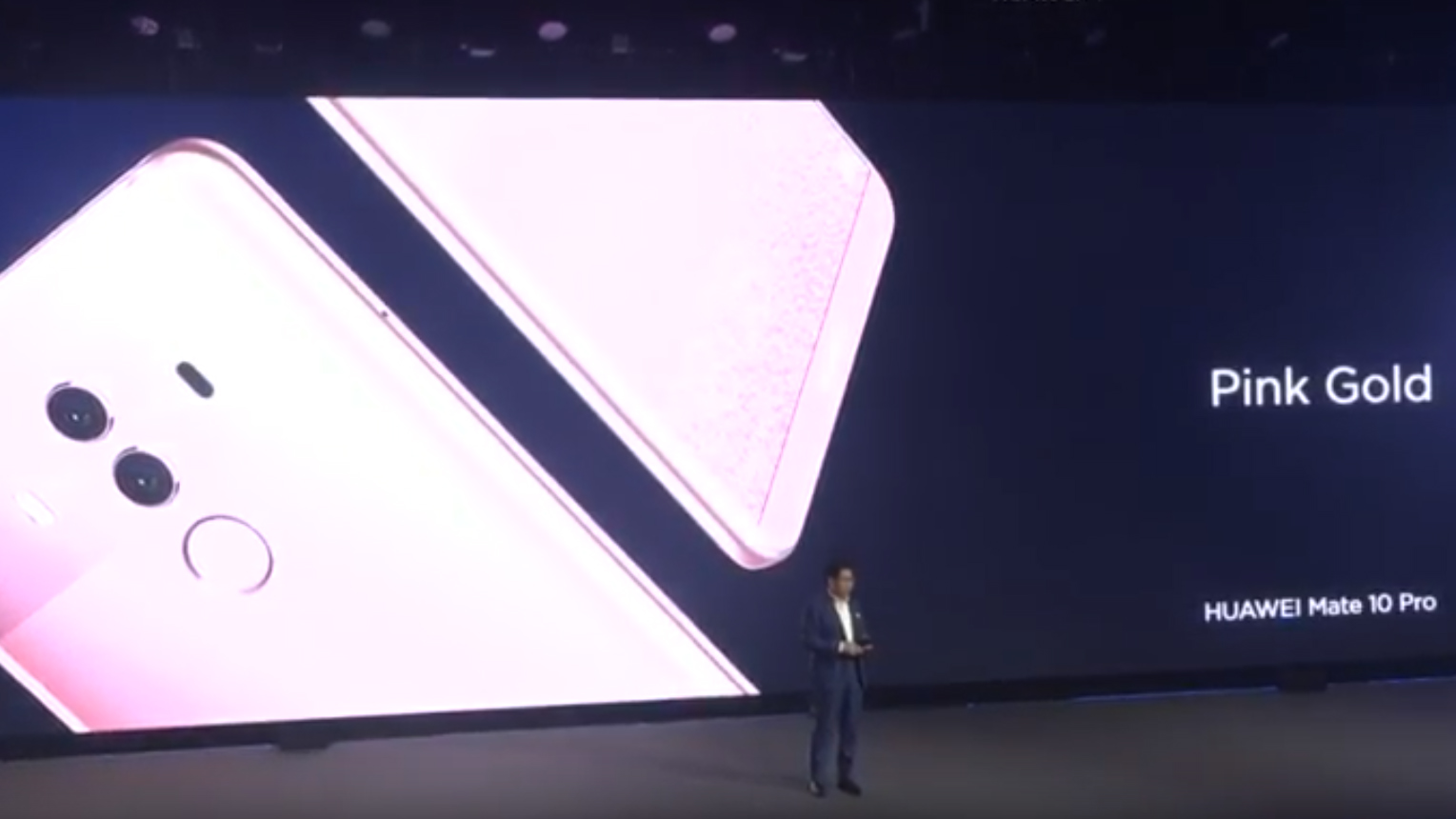No, Huawei, it's unacceptable to make pink phones 'for the ladies'
Unless we've found a wormhole to the 1970s

Right - I don't usually get that bothered by anything a brand says on stage when they're unveiling a new product. It's usually an exercise in hyperbole.
But what Huawei has just done (again) is unacceptable.
I'll just leave the exact quote from Richard Yu, CEO of Huawei Mobile, out for all of you to see when he announced the Pink Gold variant of the new Huawei Mate 10 and Mate 10 Pro:
"This color is very unique, pink gold, a very unique color in the world... You know, we select many colors for the girls, for the ladies selection, this is the most preferred color."
There's so much wrong with this statement in 2017 that it's hard to express it fully. It would have been inappropriate 20 years ago, but to think that it's still, in any way, acceptable to refer to pink as a 'girl's color' is inexplicable by one of the world's largest smartphone makers.
You can see the launch below, at the point the color variant was unveiled:
Look, I'm not saying that no women like the color pink. Nor am I saying that they can't go and choose the midnight blue or titanium gray if that's their preference.
Get daily insight, inspiration and deals in your inbox
Sign up for breaking news, reviews, opinion, top tech deals, and more.
What is terrible is that they have to be so overtly gendered. What that does is reinforce the notion that the other less garish, more 'professional' muted colors, are for men. Men who do 'proper business'.
In the magically gender-empowered world where there's no divide, this wouldn't matter. It would be the witterings of one brand out of touch with modern society and we could just laugh at their naivety.
But it's not that way at all. We still have proof of the gender divide all over the place, and this just reinforces it. It says to the girl who's been trained to enjoy pink gadgets that she can't break out of that mould.
It says to the man who likes the color Pink Gold that he definitely can't have this, because he is not a lady or a girl.
Huawei has form here too: I vividly remember recoiling when it launched the Swarovski crystal version of the Huawei Watch 'for the ladies' - it's fine to bring these things out, but to label them so is just unedifying.
Huawei, once again, goes out of its way at a launch to tell us Pink Gold is FOR THE LADIES. 🤦♂️October 16, 2017
"For ladies, this is the most preferred color." Pink gold, of course. Because it's not like women could prefer, oh, blue. 🙄 #HuaweiMate10October 16, 2017
And there it is....Richard Yu says that they made a Huawei Mate 10 Pro in Pink Gold "to appeal to the girls...we know girls like pink"October 16, 2017
#GoPinkWithHuawei with the all-new Huawei #nova2Plus in Pink. Guaranteed to turn heads. pic.twitter.com/UGzQ1XgpcOOctober 2, 2017
Huawei isn't the only brand with form here - I was terribly disappointed with HTC when it brought out the U Ultra in a 'Cosmetic Pink' variant.
HTC: boys can like pink too. Cosmetic Pink is one step worse than calling a phone a ladies' phone at launch, it lumps it in with the idea of makeup and might as well come with a handbag charm.
(Oh, wait... we did have the HTC Rhyme that offered just that...)
Or how about the smart speakers designed for women by Stelle, which include Swarovski crystal-infused model?
This is just the tip of the iceberg... there are far more examples of such marketing if you just scrape a little.
The thing is, of course these colors and decorations sell. That's why they're made. But to gender-define them is an archaic way of thinking. Yes, some women might enjoy a charm that helps them see in the chaos of their bag. In our review, we lauded its use as such.
But men might like the same thing dangling out their pocket. Or they might not. It doesn't matter - the thing about defining a gender when launching a variant of a product is unfair and difficult for those struggling to define themselves.
Small is beautiful
Apple has good form here - it resolutely refused to gender-define its products. Everyone knows that the smaller Apple Watch will suit a slimmer wrist, and the larger product something chunkier.
But given that can apply to both genders, why feel the need to type it? And yes, perhaps some women would really like the rose gold (which was decidedly pink in real life) variant of the iPhone, but it can also be a stylish accessory to a man... as the marketing proved.

I'm not saying stop making these products. You can make whatever you want - it's literally your business, not mine.
But please, for the love of progression and less sidelining in a world that needs unity more than ever, just stop telling us which gender something belongs to.

Gareth has been part of the consumer technology world in a career spanning three decades. He started life as a staff writer on the fledgling TechRadar, and has grew with the site (primarily as phones, tablets and wearables editor) until becoming Global Editor in Chief in 2018. Gareth has written over 4,000 articles for TechRadar, has contributed expert insight to a number of other publications, chaired panels on zeitgeist technologies, presented at the Gadget Show Live as well as representing the brand on TV and radio for multiple channels including Sky, BBC, ITV and Al-Jazeera. Passionate about fitness, he can bore anyone rigid about stress management, sleep tracking, heart rate variance as well as bemoaning something about the latest iPhone, Galaxy or OLED TV.